Clintonia borealis
Clintonia borealis yellow bluebead lily
This perennial, a member of the lily family, features a smooth, leafless scape that can reach up to 16 inches tall. It earns its common name, yellow bluebead lily, from the deep blue berries it produces. While these berries are bitter and mildly toxic to humans, they are readily consumed by small wildlife such as birds and chipmunks.
Yellow bluebead lily blooms from May to June with each plant having a single stalk and displaying groups of 2 to 8 yellow to yellowish green nodding, bell-like flowers with 6 narrow petal-like structures called tepals and 6 protruding stamens with yellow tips.
At the base of the plant, 2 to 4 bright green basal leaves emerge, each measuring between 6 to 12 inches in length and 2 to 4 inches in width. The leaves taper at the base and feature a prominent central vein, a glossy surface, and pointed tips.
This lily thrives in rich, moist woodlands, where it spreads in dense colonies through underground rhizomes. Native to northeastern North America, its range extends from eastern Canada into the northeastern United States, including much of Pennsylvania. Though similar in appearance, the speckled woodlily differs from bluebead lily by its larger basal leaves, upright white flowers speckled with green or purplish brown, and dark berries that range from black to deep purple.
Habitat & Range
Frequent in moist woods, mostly North and at higher elevation along the Allegheny front. Prefers partial to full shade and moist, well-drained, acidic soil.
Found in most of the state, except south-east.
Range: Extends from Canada to Georgia.
| EMP: | FAC |
|---|---|
| NCNE: | FAC |
Phenology
Flowers May and June. Blooming period is 2 to 3 weeks.
Characteristics
Inflorescence short terminal raceme with 2 to 5 (max 8) flowers per raceme
Flowers outward-facing, bell-shaped, nodding, perianth yellow to greenish yellow, 6 narrow tepals, slightly downy on the upper surface; 6 protruding stamens with yellow tips
Leaves basal only, 2 to 4; brigth green, glossy, margins smooth; oblong to elliptic; prominent central vein; 6 to 12″ long, 2 to 4″ wide
Stem(Scape) smooth, erect, leafless; 6 to 16″ tall
Fruit fleshy, ovoid berries; green to white when young turning bright blue with age
Height 6 to 16 inches
Plant Codes
S-rank: S5 (Secure)
G-rank: G5 (Secure)
Ecology
Main pollinators are a variety of insects like bees, beetles, and flies that feed on nectar and pollen. Small wildlife like birds and chipmunks feed on the berries. Considered mildly toxic to humans.

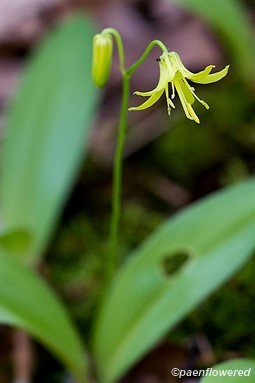
.jpg?v=638489587980000000)
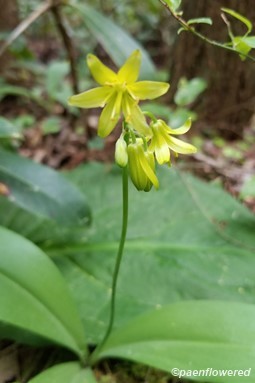
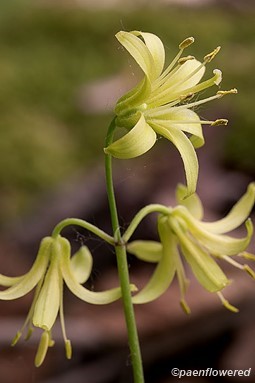
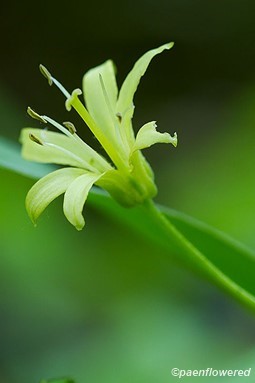
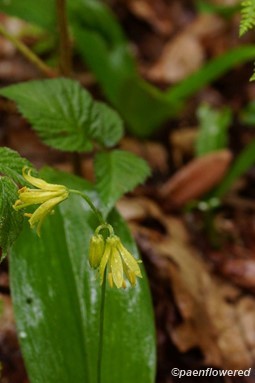
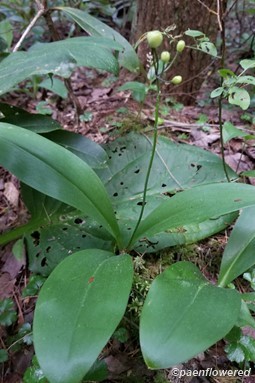

.jpg?v=638489587990000000)
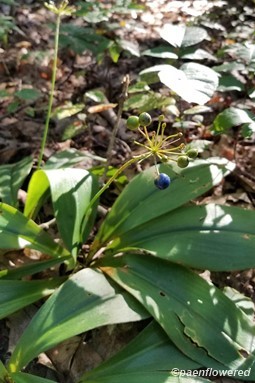


Comments
Have you spotted this plant in your area? We'd love to hear about your experience! Share your comments or questions about the plant below. Comments are moderated before posting.